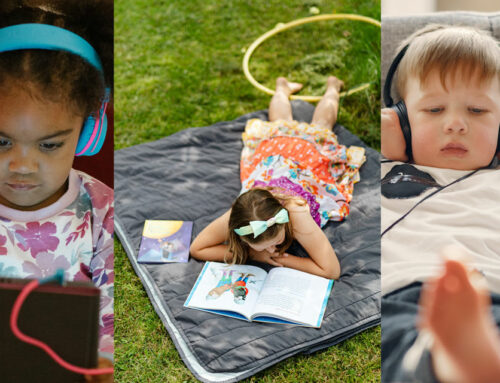From the Archive
This article was originally published in the Summer 2015 edition of the Potential Plus UK ezine Fuse
Gillian McClure is a much-loved British author and illustrator. Her books have been translated into many different languages and Selkie won an award for Outstanding Achievement in Children’s Books. Some of Gillian’s picture books, like Tom Finger, have been inspired by classic themes or fairy tales. Others were created completely by her own imagination.
“Zoe’s Boat is illustrated in watercolour using an interesting frame format. The way the text, drawings and frames flow together gives a really fun, graphic novel effect.” This is typical of Gillian’s rich and unusual style.
Keen to visit schools and work with students, Gillian uses her stories and artwork to inspire children and young people to write and illustrate their own books. She says she tries to make her stories timeless and placeless yet relevant to children today.
How Do I Combine the Images and Words?
Gillian shared with us how she makes sure her paintings and writings fall into place, using as an example her book Flood.
“When I’m asked which comes first in my picture books, the images or the
words, I say the words come first. I like to do a first written draft and then, when I’m thinking about page layouts and the integration of image with text, I do the second draft. This is when I remove all unnecessary words where images can do the work instead. However, I do hold an image in my head right from the start. – An image forms the essence of the book.”
“In my book, Flood, (July 2014), that first image was full of opposites. Paradoxical.
There was a hen in a flood, safe in what looks like a red furry nest…but really it’s a fox’s tail! It was from this image that the story started to emerge; a hen trying to dodge the eyes of a hungry fox who wants to hold her in his stare and then eat her. So what’s preventing the fox from doing just that?”
“…another tail! In order to survive the flood the fox has to grab the tail of an ox and cling on tight. And then I realised that the anxious little hen, at the back of this string of animals relying on two tails to survive, might also be able to help.”
“From my very scant knowledge of rudders, I knew that if you turn a rudder one way the boat goes the opposite way. (I tried it out with a toothpick and a match box!)”
“So the hen in my story discovers, in the course of looking this way and that, trying to avoid the eyes of the Hungry Fox, that she can steer. She squawks out directions, the fox turns his head, pulls on the tail of the ox who then changes direction.”
“In this way they proceed through the flood until they reach land. And so, from the first image of a hen in a foxy nest, I arrive at my story; a sort of flood fable with friendship at the end.”
Gillian loves to write mainly for children and to use watercolours to mix her words into the images. However, her experience is extremely useful for any format of book you may be making. From an encyclopaedia to a comic strip you will need to plan to make sure the words and the drawings are balanced carefully and attractively. Even ‘storyboards’ for films, animations and computer games have to focus on these elements too.
Activity: Building Illustrations
Let’s Learn How to Create a Single Picture to Tell in Detail a Moment of a Story!
The challenge for this Activity is to tell a story richly and visually, using our eyes – but without relying on words! Be patient with each step and do as well as you can with the time that you have. This is all about relaxing as you follow a method and focus on one ‘frame’ of storytelling. One piece of Artwork. One sentence – or maybe no words at all.
Use your own style!
Pick any style of art and try this professional method of working up a final image. Gillian shares with us the sequence of sketches and roughs leading to her finished artwork of a page in Bruna.
You could sketch in grey then complete in coloured pencil, charcoals or watercolours. Maybe rough out a cartoon image in pencil, then draw over it in bold blocks of felt-tipped colour. Or even sketch then cut out ideas for parts of a photograph. Move them around your planning page before you decide, then glue your ‘guide to the perfect shot’.















